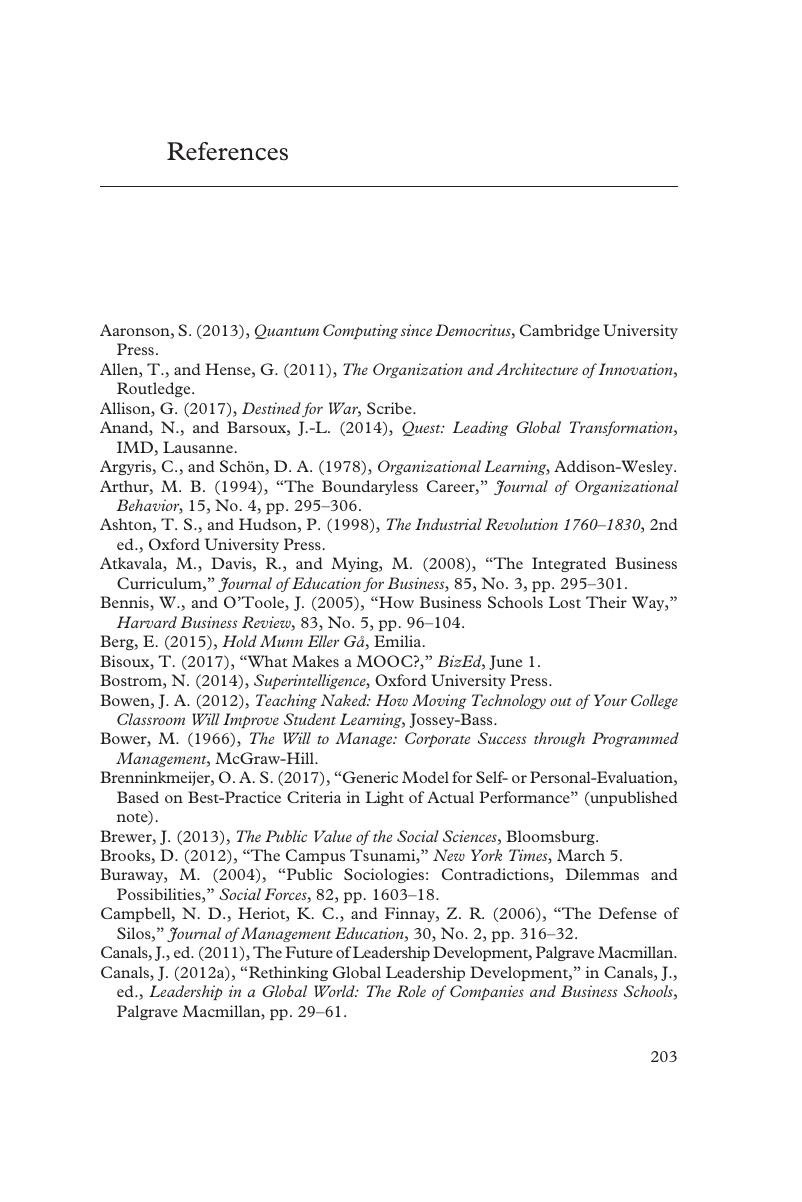Book contents
- The Business School of the Future
- The Business School of the Future
- Copyright page
- Contents
- Preface
- 1 Why Are Business Schools Generally So Static, and Why Is New Knowledge Needed?
- 2 Evolution of the Conventional Business School
- 3 The Faculty and the Dean/President
- 4 Modern Pedagogy and the Modern Student
- 5 Research, Marketing, and Managing Resources
- 6 Innovations and a Change Culture
- 7 Eight Cutting-Edge Dilemmas and Strategic Projects
- 8 Emerging Business Models
- 9 The Future
- 10 Eight Case Examples
- Appendix:Students’ Self-Assessment of Learning Experiences
- References
- Index
- References
References
Published online by Cambridge University Press: 18 November 2019
- The Business School of the Future
- The Business School of the Future
- Copyright page
- Contents
- Preface
- 1 Why Are Business Schools Generally So Static, and Why Is New Knowledge Needed?
- 2 Evolution of the Conventional Business School
- 3 The Faculty and the Dean/President
- 4 Modern Pedagogy and the Modern Student
- 5 Research, Marketing, and Managing Resources
- 6 Innovations and a Change Culture
- 7 Eight Cutting-Edge Dilemmas and Strategic Projects
- 8 Emerging Business Models
- 9 The Future
- 10 Eight Case Examples
- Appendix:Students’ Self-Assessment of Learning Experiences
- References
- Index
- References
Summary

- Type
- Chapter
- Information
- The Business School of the Future , pp. 203 - 207Publisher: Cambridge University PressPrint publication year: 2019



